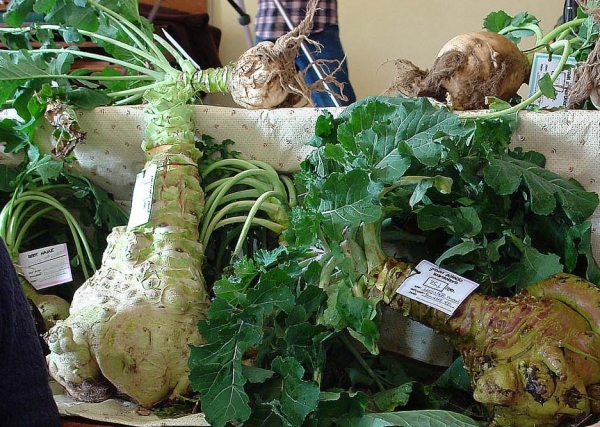DUMMERSTON — Here's to the Gilfeather turnip!
We were surprised and pleased to learn that the Legislature is considering designating the turnip as the state vegetable.
The humble Gilfeather hasn't won any beauty contests, but it has won the palates and hearts of people who enjoy a sweet, mild, delicately flavored, sweet-tasting vegetable served in a variety of dishes.
A neighbor friend gave us a thimbleful of seed in 1977 and told us about John Gilfeather of Wardsboro, who developed the plant and was very protective of it.
We planted the seed and liked the turnip it produced - so much that we wondered if others were aware of it. To find out, we packaged seed from some of the plants and took the packets to Agway to test customer interest.
Within a week, the packets were sold out! This encouraged us to plant more turnips and produce more seed for sale.
* * *
In 1981, Gordon Hayward wrote a wonderful article on the Gilfeather for Horticulture. The response we got was amazing. People from almost every state in the country wanted Gilfeather seed. We had more than 2,000 orders.
We sold seeds to individuals and, in the years that followed, to several seed companies. Through the 1980s and well into the 1990s, stories about the Gilfeather appeared in Vermont Life, The Boston Globe, The Christian Science Monitor, Agway Cooperator, and a host of other publications.
Respecting John Gilfeather's feeling about his turnip, we contacted the University of Vermont to determine whether it is indeed a turnip and not a rutabaga. The response we got is that it is genetically a turnip, albeit with the characteristics of a rutabaga.
The U.S. Department of Agriculture agreed and had the Gilfeather seeds stored in the National Center for Genetic Resources Preservation in Fort Collins, Colo.
Further, we contacted U.S. Patent and Trademark Office and trademarked the word “Gilfeather,” so that the Gilfeather name could be used only with the seed that produced this particular turnip.
We also trademarked the word “Gilfeather” with Vermont's Secretary of State and got the turnip accepted as an heirloom vegetable by the State Department of Agriculture, the first such Vermont vegetable to be so registered.
Our aim was to protect both the Gilfeather turnip for Vermont and John Gilfeather's name.
In 2002 it was time, after more than 20 years with this turnip, to pass our Gilfeather enterprise on. We sold the business to Paul and Wendy Dutton of Dutton's Berry Farm in Newfane and Brookline, thereby keeping the turnip in the West River Valley. This was also the year when the annual Gilfeather Turnip Festival began in Wardsboro.
* * *
The Gilfeather turnip truly is a treasure that contributes to the specialness of Vermont. Given its history in the state and ever-broadening reputation among people near and far who enjoy and value fine vegetables, the Gilfeather turnip's definitely worthy of being named the state vegetable.
If we can have a state fossil (mammoth tooth and tusk), insect (honeybee), and fruit (apple), why not the Gilfeather turnip?
